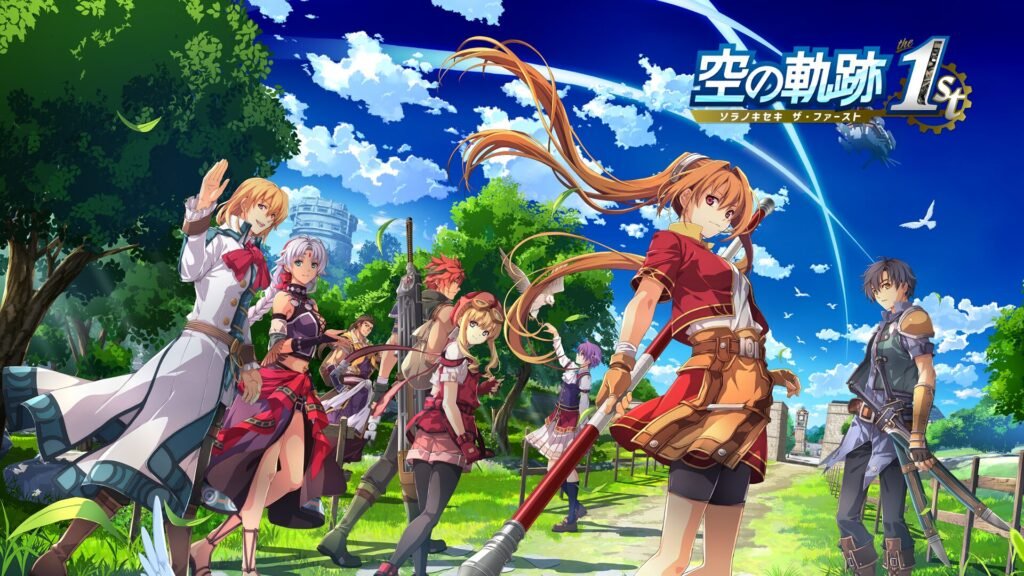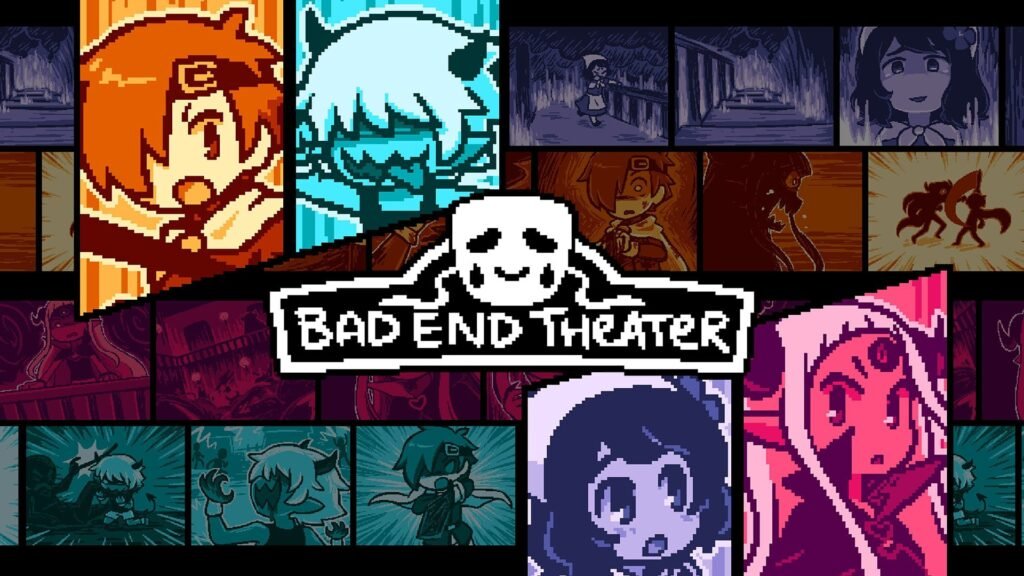We’ve got some big Trails/Kiseki/Legend of Heroes fans here at PS Legends. Reviews for the newer releases tend to be in high demand around these parts. In my own experience though, I’ve previously found the long-running saga somewhat difficult to jump into at this late stage, and this isn’t helped by the respectable games often being in the shadow of other games released around the same time.
There’s a barrier of sorts in my way, and so what I really need is a solid entry point; Something to ease me into this complicated world without the need for research or commitment. The Legend of Nayuta: Boundless Trails could be just what I’ve been looking for; A trial, for people like me who aren’t too invested in the saga. It’s an unconnected spin-off story whilst most other games in the series have some form of overlapping setting or narrative arc.
Introduction
The Legend of Nayuta: Boundless Trails is a long-awaited remaster of the PSP classic. The game was first released as Nayuta no Kiseki for the PlayStation Portable in Japan in July, 2012. The remaster, Nayuta no Kiseki: Kai, was released in Japan for PlayStation 4 in June, 2021. Being a remaster, various aspects of the game were improved to make use of the stronger hardware.
All characters have now received dialogue portraits, the illustrations for key events were remade, the frame-rate was increased to 60 frames per second, and the sound was replaced with higher-quality files. Today’s long-awaited English translation by NIS America was released internationally for the PlayStation 4 in September, 2023.
The game is an alternate timeline spin-off of the Trails series, set on Remnant Isle, within a different world than the mainline Trails titles. The game makes no mention of the continent of Zemuria and makes use of a new calendar rather than the Septian Calendar. Instead of the Great Collapse, the catastrophic event that defined the mainline Trails titles’ world, the world in Boundless Trails had to overcome a legendary ‘Great Flood’ instead.

Story
The Legend of Nayuta takes place on the Sea of Ciencia, a vast ocean dotted with small islands. Humans living on these islands believe the known world is not the only one in existence. One such believer was astronomer William Herschel, father of protagonist Nayuta Herschel, who set sail in hope of discovering one such hypothetical world. The home of the protagonist is a small island known as Remnant Isle in the middle of the Sea of Ciencia.
Remnant Isle has become known for a strange phenomenon in which ruins and stars fall from the sky. It is even believed Remnant Isle itself was formed from ruins that fell from the sky in the distant past. Star Fragments, composed of a mysterious ore, can be found where these stars have fallen. Star Fragments are known to respond to the seven prismatic colours of light. When a certain amount of light is projected onto these shards, they are believed to show the world of ‘Lost Heaven’, a mysterious land of beautiful flora and fauna.
The story follows Nayuta Herschel, a young aspiring researcher aiming to see what’s further beyond the known world. As Nayuta was returning to Remnant Isle for the summer, he and his childhood friend Cygna Alhazen find themselves in the world of Lost Heaven through the guidance of the otherworldly fairy Noi, as they get involved in a plot to stop a madman from destroying both Lost Heaven and potentially Nayuta’s own world in the process.

Gameplay
The Legend of Nayuta: Boundless Trails is an action role-playing game, with gameplay similar to Falcom’s YS series. Combat actions include physical attacks, magical attacks known as Arts, and powerful abilities unique to each character. Nayuta is assisted by Noi, a pretty little fairy companion. Noi serves as our spell-caster, and can be equipped with different outfits that offer various protections. Noi will gradually learn new types of magic as the adventure progresses, and each one can be upgraded.
The game also features elements of platforming and more of a stage-based traversal method. There is no open world map to explore, but rather a flat over-world map displaying a list of levels to work through, one by one. There are continents on which you must travel to, in order to reclaim gears to progress. While there, additional tasks are available, such as collecting three purple crystals, finding treasure chests, and clearing other time-sensitive or collection-based objectives.
Where Legend of Nayuta distinguishes itself from other similar games is with its four seasons (spring, summer, autumn, winter) per continent to play through. At first, only one season is available on each continent, but as you advance through the game, we’ll be playing seasonally revised versions of each level with each subsequent visit. For example, revisiting a level in winter will have a lake that previously blocked our path now freeze over, allowing access to more out-of-reach areas.

Graphics/Sound
A game that was once considered one of the prettiest games on PSP wouldn’t look nearly so impressive on a modern home console, and so numerous visual enhancements have been added to bridge the generation gap. The colour scheme is great, and complimented by some lovely reflective surfaces and a whole lot of smoothing to deliver crisp, solid objects, though it’s difficult to agree that these enhancements have been applied where they’re needed the most.
The new improvements actually highlight a lack of attention to detail, with minimalist textures and countless objects that look a bit too angular. The character portraits are nice, however, the clunkiness of the character models and animations really highlight the game’s PSP roots. Think back to those blocky, stiff characters we regularly encountered back on PS2 and you’ll get the idea. The game runs well enough with a solid frame-rate throughout yet generally looks old and rough around the edges.
The game is voiced in English, however this was clearly done on a minimal budget, as the actual voiced conversations are few and far between. Nayuta’s voice actor also sounds far too young for a somewhat worldly 15-year-old. The soundtrack is great though; The collection of rocky battle themes, mysterious dungeon themes, and enchanting story themes work incredibly well.

Conclusion
The Legend of Nayuta: Boundless Trails may be a product of its time, yet it’s one that still retains a lot of charm. I’m instantly reminded of PS2-era anime hack-and-slash JRPGs, which are often nice to revisit. It’s also an experience that can be tailored with handy combat difficulty settings, which are helpful for those more interested on exploration and adventuring than actual challenge. Skipping a few sidequests here and there, you can beat the main story in around 20 hours.
The game has tonnes of replay value, including a short after-story chapter and a New Game+ feature which includes additional, bonus content. This compliments the respectable gameplay progression and solid soundtrack, which will appeal to many. The characters and storytelling also have a lot of potential, yet it’s potential that isn’t really reached here, and this is directly due to the game’s lackluster presentation.
If you’re looking for a shorter action-JRPG that isn’t too demanding, Boundless Trails is definitely worth a look. Old-school YS fans will also feel right at home here. As a remaster, there’s definitely an effort been made here to polish up the audio and visuals, yet it’s just not enough to make the game feel relevant, current, or worth it’s full-price value. As such, Legend of Nayuta struggles to reach the top tier of the scoreboard.
Joys
- Simple, nostalgic gameplay
- Colourful, enchanting world
- Great soundtrack
Cons
- Unimpressive visuals
- Very little voice acting
- Not the best value for money



